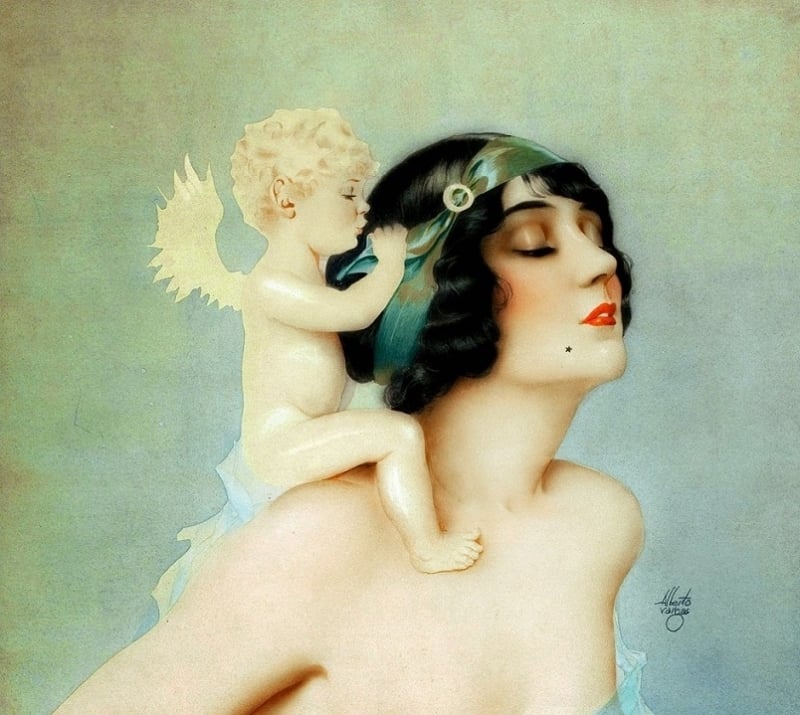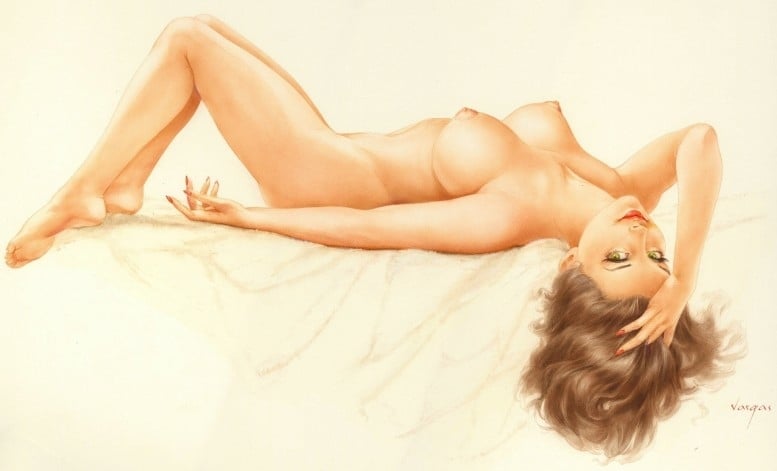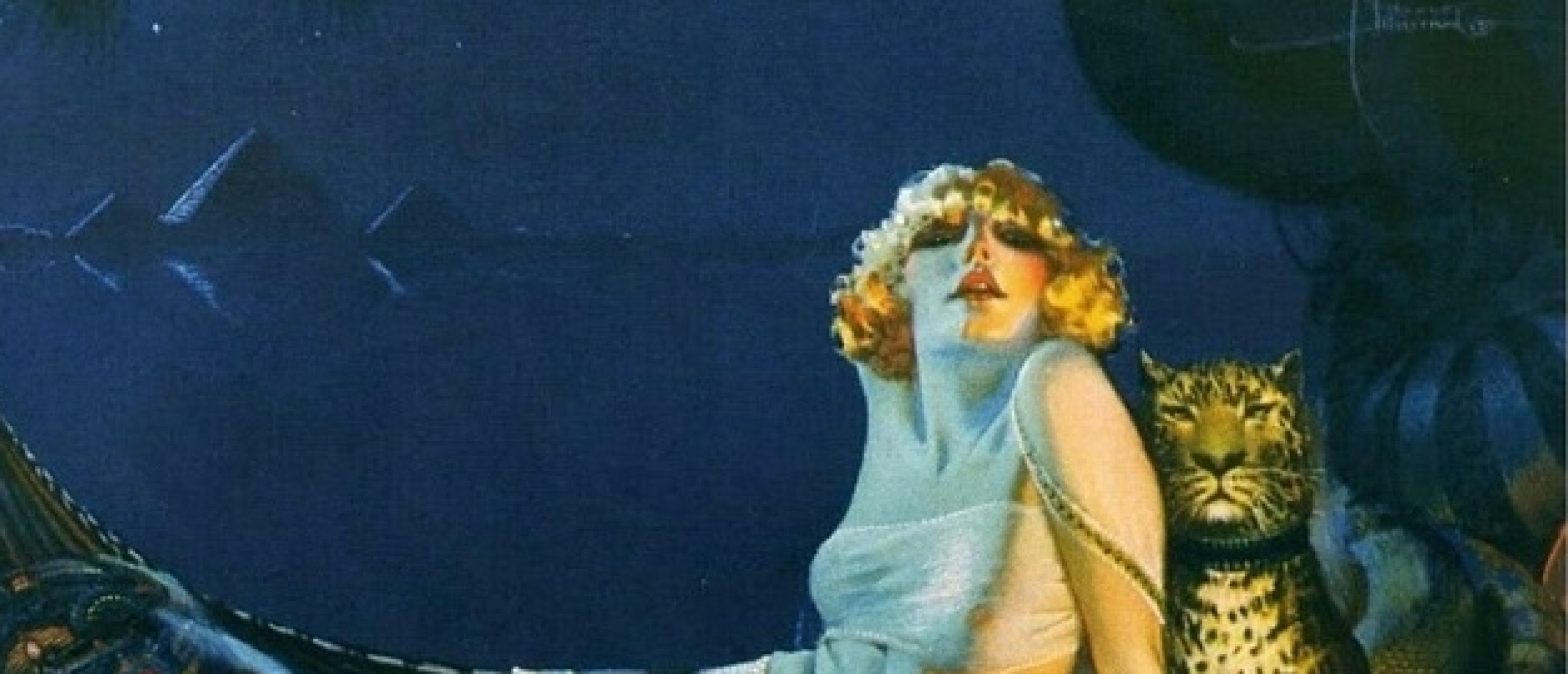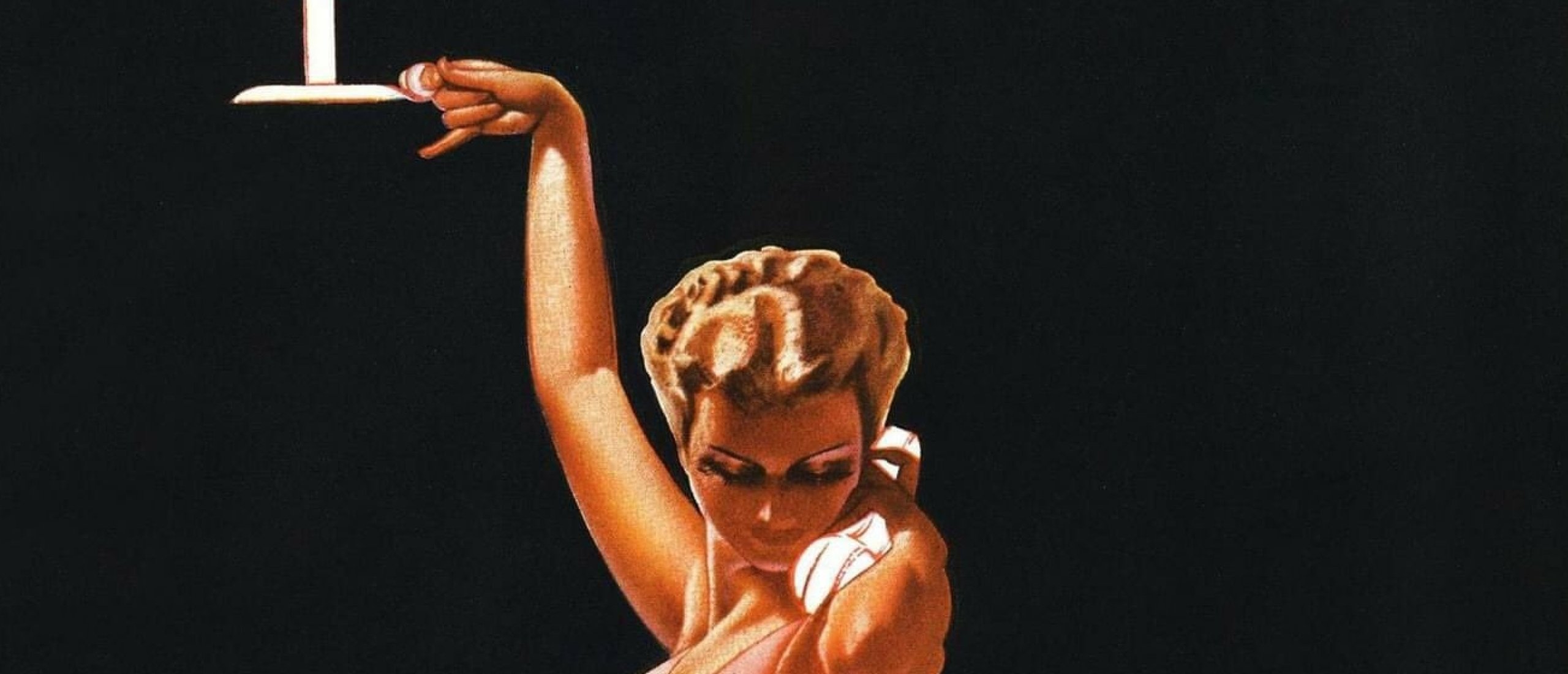
Few artists have had the power to weave their indelible mark on the fabric of a nation's identity. Alberto Vargas (1896-1982) captured the nuance, the grace and power of femininity for over 70 years.
Evidently Gifted
The creator of the Varga girl was born in the city of Arequipa, Peru, on February 9, 1896, as Joaquin Alberto Vargas y Chàves. Alberto was the first of six children born to Margarita and Max Vargas, a prominent photographer known throughout Peru for his portraits and landscapes. Due to his father's success he and his six siblings grew up in a privileged environment. His mother wanted her children to have a first-rate education, preferably in one of Europe's finest schools. Vargas sketched from an early age, and became skilled with the airbrush his father used for photo retouching. According to many accounts, even as a boy Alberto had an evident gift for art and drawing. He was a conscientious draftsman who experimented with oils and pastels before finally opting for watercolor as his medium of choice.

Fig.1. Linda Darnell being sketched by famed pin up artist Alberto Vargas, on set of Forever Amber (1947)
La Vie Parisienne
In 1911 Maximilian took his two sons to Paris, where the young Alberto, then 15, studied art and photography. The museums of Paris were a revelation. The art of Ingres and other great masters elated him, and Alberto threw himself into trying to emulate their work. Here, he also came upon the French magazine La Vie Parisienne, with a cover by Raphael Kirchner, which he said was a great influence on his work. In 1916, as war was escalating in Europe, both sons were urged by their father to leave for the United States. They arrived in New York City in October of that same year.
Cascades of Girls
During those first days in New York, Vargas was introduced to the unique dynamics of the island of Manhattan, with its raucous swirl of color and movement, and all the electricity in the air. He had never felt such excitement. And what excited him most were the American women. As he walked through Union Square during lunch hour, young women came pouring out of offices and shops. "My mouth fell open and I couldn't close it again!" he said years later. From every building came cascades of girls. Hundreds of girls with an air of self-assuredness and determination that said: "Here I am, how do you like me?" At that moment he realized that he was not going home anymore.

Fig.3. Girl with Angel
$200 Per Painting
In this same rush of independence, Vargas made another decision: he would pursue his true love, painting. He landed a job with a department store on 42nd Street painting portraits of live models in the store's large display window. One day the manager of the Ziegfried Follies invited himself into the display window and said he might have a job for him. Vargas was hired to paint 12 large portraits of Ziegfield's new stars (Fig. ) and offered $200 per painting, launching a 12-year relationship with Ziegfield, who provided a studio and instructed all his stars to sit for the artist.
Anna Mae Clift
During this time, Vargas also fell madly in love with a young woman he met when he was walking along Broadway, in the heart of the theater district. Her name was Anna Mae Clift, from Soddy-Daisy, Tennessee. The shy Alberto approached her and, in his broken English introduced himself. He told her he was an artist and that he would love to paint her portrait, but he had no money with which to pay her. Anna Mae liked him right away and agreed to pose for him, at no cost, and after that Anna Mae was his single emotional focus, and favorite model. They married after a courtship of several years.

Fig.3. Anna Mae Clift and Alberto Vargas (tumblr.com)
Marlene Dietrich
When the stock market crashed in 1929 the Follies fell on hard times. Vargas was out of work.He picked up magazine illustration jobs, as well as ad assignments from various Hollywood studios. Based on the quality of this ad work, Twentieth Century Fox invited him to Hollywood. With the help of Anna Mae's friend Busby Berkeley got set design work at Paramount and Warner Brothers, as well as Fox, and the Vargases bought their first and only home, a small bungalow in the Westwood neighborhood of Los Angeles. Marlene Dietrich (Fig. ), Alice Fay, Carole Lombard and Greta Garbo were among those who sat for him in Hollywood, as well as Barbara Stanwyck, immortalized by Vargas in a poster for the 1933 film Ladies They Talk About. That same year Esquire magazine and the Petty Girl debuted.

Fig.4. Marlene Dietrich in The Flame of New Orleans (1941) (flickr.com - susanlenox)
"More Euphonious"
In 1939, Vargas joined a unionized studio walkout. He was branded a communist and ostracized by the studios, so he returned alone to New York looking for work. A friend urged him to show his work to esquire, where Publisher David Smart was impressed with his ability and his desperation. Petty had become increasingly difficult, demanding $1,000 per painting. Vargas offered an escape, and at only $75 a week. A three-year contract was drawn up. The Petty Girl would be replaced by the Varga girl - removing the "s" from "Vargas," Smart insisted, made the name "more euphonious." The change seemed innocuous, but the consequences would be profound.

Fig.5. Varga Girl, Esquire magazine, December 1944
His Fame Soared
The first Varga Girl appeared in the October 1940 issue and was quickly embraced by readers. Alberto would later say his time with Esquire was both the best and the worst if his career. The first two years were the best. He had a stable income, and producing a new Varga Girl each month, along with 12 paintings a year for the Varga Girl Calendar, refined his skills. His first calendar, in 1941, outsold all others worldwide, and his fame soared.
Special Girls
When the United States entered the war the Varga Girl was pinned up, copied or otherwise attached near battleship bunks, in army barracks, on submarine walls, and painted on pilots' jackets and aircraft fuselages. She was so popular that Esquire published free military editions of the magazine, with the Varga Girl printed on its outside back cover. Vargas began receiving letters asking him to paint special girls for individual platoons -- requests he actually fulfilled as often as he could.

Fig.6. The Veil, watercolor on board, circa 1930. The date of 1924 was added later, and incorrectly, to this originally undated piece. The Max Vargas collection.
Worst Years
As Vargas' popularity grew, publisher Smart guarded him closely. All deals had to pass through Esquire, including movie posters for Something for the Boys (1944) and MGM's Du Barry Was a Lady (1943). At the same time Smart pushed Vargas to produce more images for datebooks, playing cards, note cards and, of course, calendars. Still, all was well until Smart drew up a new contract in 1943. Smart had been a good friend, socializing with Alberto and Anna Mae, so for Alberto it was a matter of honor to trust him. He signed the contract without reading it. Now the worst years would begin.

Fig.7.

Fig.8.

Fig.9. Memoirs of Olive , watercolor on board, 1920 (24 x 18 inches) (Image source: Wikipedia.org)
Memories of Olive
This is a piece depicting Ziegfield Follies dancer turned Hollywood actress Olive Thomas. Now long forgotten, Olive was to the 1910s what Marilyn Monroe was to the 1950s. She started as a model in 1914, then became a lead dancer in Ziegfield's private, and more risqué, Midnight Frolic show,. She left for Hollywood in 1916, where she starred in films including Madcap Madge and Indiscreet Corrine - and married Mary Pickford's brother, Jack.
Chronic Syphilis
In 1920 the couple was partying in Paris and returned, heavily intoxicated, to their hotel room, where Thomas drank a flask of mercury bichloride, which Jack used as topical treatment for his chronic syphilis. She reportedly thought it was either alcohol or a sleeping potion, and died five days later of kidney failure. Her death was the first great Hollywood scandal.

Fig.10. Watercolor on board, 1942, for the January 1943 issue of Esquire. (29.75 x 19.75 inches). The Spencer Museum of Art.

Fig.11. Miss April from the 1941 Esquire Varga calendar
Become a Premium member now and discover, among many other things, more about Vargas' worst years, his pioneering work for Playboy, his later years and more than 5 times as much images of rare sketches, paintings and unique photos of his favorite models including detailed descriptions.
Click HERE for the seductive pin-ups of the French painter Alain Aslan
Sources: The Art of Pin-Up by Dian Hanson, twitter.com, cigaraficionado.com, flickr.com,










